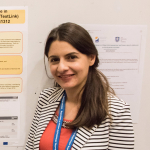As the maker movement is increasingly adopted into K‐12 schools and nonformal makerspaces, students have more opportunities to generate unique, personalized projects and artifacts, such as computer programs, robots, DIY electronics and to develop new competencies and skills. Digital making technologies if coupled with proper learning methodologies such as suggested by Constructivism (Piaget, 1974) and Constructionism (Papert & Harel, 1991) can provide learning experiences that promote young people’s creativity, critical thinking, collaboration and problem-solving skills, the essential skills necessary in the workplace of the 21st century (21st C Skills). However, assessment of these higher order skills is not easy, particularly within these open-ended environments where students create unique solution paths to problems, interact with peers, and act in both the physical and digital worlds. Currently, digital technologies offer novel methods and solutions to assess the 21st century skills and offer insights to learners’ efforts and achievements that become available for …
